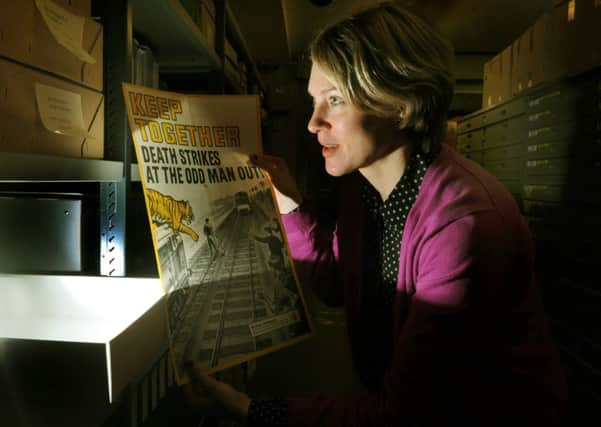How safety became an important message on railway


While there was concern for rail passengers, the safety of employees did not register with the public and Government alike. But by 1913 worker deaths and injuries on the railways had increased to 30,000 in one year alone and attitudes began to change.
Dr Mike Esbester, senior lecturer in history at the University of Portsmouth, has been exploring the history of railway safety with the help of the National Railway Museum’s archives. He discovered charms, leaping tigers and bikini clad women have all played a part in trying to get across the safety message – as told in a new virtual exhibition at the York museum.
Advertisement
Hide AdAdvertisement
Hide Ad“The history of health and safety on the railways – and beyond – is a fascinating one,” Dr Esbester said. “Though today health and safety may have a bad reputation, when you discover how dangerous railway work was at the beginning of the 20th century, you realise how important it was to try to do something new.”
It had been deemed the responsibility of railway workers to look after themselves and companies did little in the way of safety, simply providing stern warnings through signs, rule books and circulars. They were keen for staff to learn first aid and, should a serious incident occur, a worker could receive treatment at a railway hospital. Some companies even provided artificial limbs for injured employees.
But by 1913 railway companies, facing pressure from trade unions and the threat of new laws, were forced to address the issue and the Great Western Railway introduced a ground breaking campaign to improve railway safety. The ‘Safety Movement’ used photography, booklets and competitions to persuade workers to avoid the dangers which lurked in the railways and showed them what should and should not be done - a tactic which has been used ever since.
This visual approach to preventing deaths and injuries spread throughout other industries and into British society. The 1914 Safety Movement booklet was teeming with photographs showing foolhardy acts and their dangerous consequences but also photographs which demonstrate the correct – and safe – way to do things.
Advertisement
Hide AdAdvertisement
Hide Ad“The fact the visual style of the 1913 safety education campaign is still in use today, and this style has spread throughout society, is a testament to the Safety Movement’s lasting impact,” Dr Esbester said.
His research can be found at http://www.nrm.org.uk/railway-safety or people can visit the National Railway Museum archives.
The museum’s collections reveal safety campaigns over the years were not just limited to visual images and booklets. Persuading workers to wear goggles was a common theme, while posters in the 1960s encouraged workers to wear high visibility clothing, something which was just being introduced.
While another, 1967 poster would likely raise eyebrows today. It depicts a voluptuous woman in an orange bikini, with a railway worker in a high-visibility jacket below, with the tag line: “Be eye catching in your mini vest.”
Dr Esbester added: “I greatly enjoyed carrying out this research.”